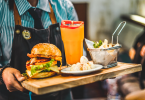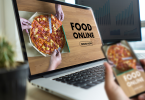
Kim Giroux from Zog Digital is back with Part II of her series on paid advertising for restaurants…
Last week we discussed how restaurants can leverage audience targeting to develop more effective paid advertising campaigns in the first of our three-part series.
This week we will continue to help restaurants improve paid ad management with tips for creating campaigns by establishing goals, leveraging your understanding of audience needs, and creating compelling content that moves consumers to buy.
Identifying Goals
Now that your restaurant brand has a deep understanding of the online behaviors and the needs of different audience segments, you need to identify and prioritize the goals of your campaign. While the end goal is often to turn fans into paying customers, your approach may vary based on the interests of your target audience segments.
Make a firm decision on what you want to focus on. Whether you want to grow your online followers, drive traffic to specific locations, target large groups for parties, draw exposure to new specials and promotions, create online orders, or drive more sales from deliveries, you can’t accomplish all of those with each ad, let alone each marketing message.
After recognizing your campaign goals, rank them in order of priority and relevance for individual audiences.
Leveraging Audience Targeting and Location
With your goals and audience segments aligned, you can now begin to create the structure of your campaigns. Build campaign groups that mold your approach to fit the needs of each group and create campaigns that are present where you audiences are currently active. Search, social , and display ads will all produce different types of engagement. Choose your platform based on your identified goals.
For each segment, leverage your understanding of their online behavior and brand expectations to align your delivery, tone, and content and achieve optimal results. Experiment with targeting options, ad types, and different delivery channels to find what combinations lead to higher engagement rates.
Developing Effective Content
Your ad content should paint a clear picture of your benefits, and the actions you want users to take. Remove any barriers to entry by keeping content simple and direct. Tie concise and compelling ad copy with imagery that resonates with your goals and creates a consistent experience that is easy to understand at a glance. We know you’ve got great imagery to put to good use — but match those food photos up with more concise copy!
Use strong calls to action and echo them throughout your ads and destination pages that your ads direct traffic to. Customized landing pages can reinforce your messaging and increase conversion rates. Test different content and tones to identify what resonates with users most effectively and drives conversions.
Conclusion
Creating powerful ad campaigns for restaurants requires you to devote resources toward understanding goals and audience behaviors. The success of your content and delivery relies heavily on this understanding and your willingness to experiment and find the best approach that drives results.
In our final installment of this three-part series on paid advertisements, we will discuss how to monitor and improve campaigns by tracking data and leveraging A/B testing.
Check back next week for more insight in developing a stronger digital presence for your business.






